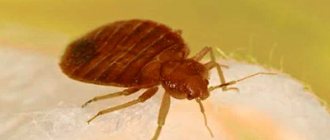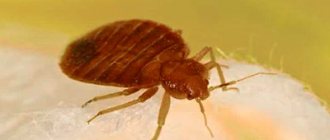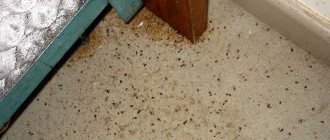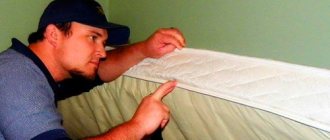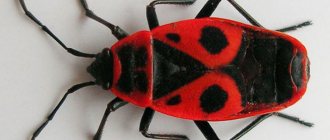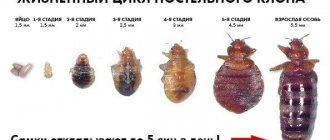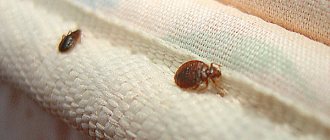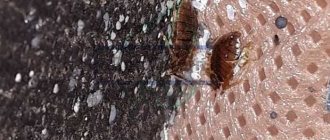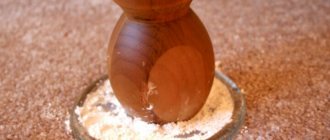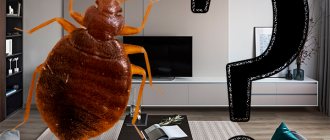It’s rare to walk through the forest, especially in the southern regions and the middle zone, without meeting shield bugs. These bugs can be found on trees, bushes, and grass. There they feed, reproduce, and breed. And while their number is limited, no particular harm is felt from them.
As the population increases, not only parks and squares, but also farmland and summer cottages begin to suffer.
- 3.1 What to do if you are bitten by a wood bug?
Appearance and structure of the insect
The name of these bugs – forest bugs – determines their habitat. They prefer to settle in forests and parks, where they find food, breed, and winter.
The color of the chitinous coating varies from green to brown-brown and allows it to become invisible against the background of the environment. The body of the insect resembles a shield due to its flattened shape, so it is classified as a member of the family of true shield insects of the order Hemiptera.
Appearance
The strength of the shell saves the bug when attacked by predators and protects it when falling from a height. In addition, two pairs of wings are hidden under it, which allow the insect to fly short distances.
The stink bug consumes plant sap for food, making holes in them with its proboscis and sucking in the nutritional mass through it. It is not so much his eyes that help him choose a suitable bush or tree, but his sensitive antennae. The bug moves around the plant using 3 pairs of legs.
There are scent glands on the insect's chest. The secret they secrete serves to scare away enemies and attract individuals of the opposite sex.
What do they eat?
For bed bugs, the source of food is the blood of people, and not everyone knows what street bugs eat. Entomologists explain that street bugs eat a lot of things.
The diet depends on what species they belong to.:
- The turtle bug eats grain crops;
- toy soldiers - they feed on seeds or fruits that have fallen from trees, plant sap, corpses of insects or small animals, and sometimes even eat each other;
- green woody stink bug loves raspberries, as well as other berries;
- eurydems - damage the leaves of young cabbage, radishes or beets;
- The Italian bug prefers dill.
The predator Perillus feeds on the Colorado potato beetle, and Picromerus prefers caterpillars with their larvae. For their part, water, garden or forest bugs serve as food for other living beings.
Two types of bugs cause damage to trees: marbled and flat. When cereal crops are damaged, they continue to look for possible ways to solve this problem to improve grain quality.
Types of forest bugs, appearance and nutrition
Forest bugs are a non-scientific name for a certain group of insects that have common external characteristics and taste preferences.
Wood bug
This shield bug (lat. Palomena prasina) is familiar to almost everyone due to its huge habitat. The ability to change color, from green in spring and summer to brown or brown-violet in autumn, makes the wood bug invisible in the forest. The length of the body of this insect does not exceed 1.5 cm. Small wings do not allow it to stay in the air for a long time, therefore long flights are not available to Palomena.
The bug prefers to live on deciduous trees and shrubs. Since the proboscis does not allow it to pierce the hard bark of the plant, it feeds on the juice of young shoots, leaves, and fruits. It can be found on linden, alder, apple, pear and other fruit-bearing crops. Among the shrubs, the green woody stink bug prefers raspberries and elderberries. With a significant increase in the population, it can attack cereal fields, orchards and vegetable gardens.
Red wood bug
The red tree bug is often called the soldier bug or fire bug because of its unusual coloring. The black back is decorated with a complex red pattern. The peculiarity of this insect is the absence of wings, so it does not fly. This is compensated by the high speed of movement using 3 pairs of legs on any vertical and horizontal surfaces.
These forest bugs feed on the juices of fruits, seeds, and young shoots of any plants that are in the environment. Soldiers do not refuse insects either. If there is a lack of food, they can suck the juices out of their own brothers.
Soldier bug
Red tree bugs are sometimes called red-legged stink bugs. The insect has a dark brown color with an orange or yellow spot at the tip of the shell. Its legs and antennae are reddish, which is the reason for the name. Lives in deciduous forests. It feeds on harmful insects and the sap of trees, fruit-bearing bushes, sucking it from their leaves, shoots, and fruits of the plant. Despite the fact that the bug can destroy small insects, the harm from it outweighs the benefits.
Red wood bug
This bug uses its color to scare away birds, as the forest bug looks very threatening. Orange and black stripes serve as a warning that this insect is inedible. It feeds on the juice of various plants, piercing leaves, shoots and fruits with its proboscis.
Brown marmorated bug
This species of shield bug began to populate the territory of Russia only a few years ago. A peculiar alternation of dark and light brown spots creates a marble pattern on the chitinous cover of the bug. The antennae have white stripes, which are used to determine whether it belongs to the species.
The diet of the marbled bug includes only plants, but their range is wide: fruit trees and shrubs, vegetables, citrus fruits, legumes. With a lack of cultivated plants, it easily turns to weeds and wild vegetation.
Poplar bug
The poplar bug, as the name suggests, lives on trees of the genus Populus, preferring silver poplar. It can feed on the sap of shoots and leaves of aspen and willow. The forest bug is especially harmful to young trees, as it prefers to live in entire colonies, destroying the plant. May harm cotton, but has not been observed on fruit trees and shrubs.
The color of the shell is brown, the paws and antennae have a yellowish tint.
What they look like
Street bug is a generalized concept. It has so many species that it is not possible to give a specific single description of what this insect looks like. Outwardly, they are all similar in body shape and leg structure.
But they differ in size and color. All varieties have an incomplete life cycle, as well as the same structure of the oral cavity (piercing-sucking type).
Females of all varieties of bedbugs lay eggs, from which larvae emerge. They molt up to 5 times, turning into sexually mature individuals.
Many outdoor varieties of such insects do not pose any danger to humans, and some can even be beneficial.
Do forest bugs bite?
Shield insects feed on plant sap or insects. They don't need human blood. Moreover, their proboscis is not designed to pierce the epidermis. Talk about forest bugs biting is unreliable, and fears are unfounded.
What to do if you are bitten by a wood bug?
Due to the fact that the forest bug's mouthparts are not designed to pierce human skin, they cannot fully bite. The most these insects can do is try to sting. Itching and tingling are most likely caused by irritation of particularly sensitive skin to a substance secreted by glands located on the abdomen of the stink bug. To get rid of it, just wash the area with soap and wipe with an alcohol-containing liquid.
Wood bugs for alcoholism
Since ancient times in Rus', wood bugs have been used to turn drinkers away from alcohol. Several individuals were poured with a glass of vodka and left for about a week. After straining, they gave me something to drink. The taste of the drink did not change due to the infusion of insects, but the dissolved substances caused vomiting and aversion to alcohol.
However, in the modern world, if you use such methods, you need to be very careful, since individual intolerance to the components of such a drink can lead to serious consequences.
Who can be confused with
In central Russia there are many varieties: the berry bug, which damages the leaves and fruits of various berry crops, and the meadow bug, which lives on herbaceous vegetation and ornamental crops.
There are different types of cruciferous bugs: the cabbage bug, which damages cabbage, radishes, turnips, etc. Pests include the sorrel bug, some lace bugs, and the pear bug.
There are bedbugs that can cause harm only occasionally. These are soldier bugs that prefer fallen seeds and fruits, organic debris and dead insects, but sometimes damage seedlings of garden crops.
Stink bugs should not be confused with their smaller cousins, bed bugs. A telltale sign of a bed bug infestation is small black spots on wallpaper or bed frames because the animals have left their excrement there.
For what reason do forest bugs fly into living spaces?
In the warm season, shield bugs do not tend to human habitation. If green bugs get into an apartment, it happens by accident. There are no conditions for their comfortable existence here. Most often, a mass flight is caused by some serious natural disaster: forest fire, flood, sudden temperature changes.
Green
In the fall, shield bugs begin to look for shelter. The green tree bug prefers to spend the winter in the forest floor, while the marbled one tries to find refuge in sheds and houses.
Reviews from gardeners
Galina, 45 years old, Omsk
I didn’t even try to find out what types of bedbugs have settled in the garden, or what they look like (red, black or something else). I just bought a universal drug (Aktara). After that there weren't even flies around.
Victor, 32 years old, Novomoskovsk
I regularly bring back bugs from fishing in my things. I don’t know why work overalls are attractive to them, but now such insects have also appeared in my garden plot. We have to fight. So far I have chosen a biological product for myself, but it does not work immediately.
Anna, 39 years old, Moscow
I go to the dacha every weekend, until recently I have never had to deal with pests, somehow I’ve been lucky in life. Now there is a dominance of bedbugs there, I treated all the beds with an insecticide (Karbofos) in the fall, and removed the grass. This was enough to solve the problem.
Forest bug infestation
How to get rid of forest bugs in the apartment and on the balcony?
There is no need to buy special products to get rid of forest bugs in your home, since single individuals can be thrown out onto the street with your hands. An anti-mosquito net will prevent the invasion of these insects during the massive summer period.
On an open balcony, bedbugs may be attracted to the plants planted there, but they will not try to enter the house. You can protect the flowers by spraying with onion peel tincture or soap solution.
Shield bugs become a problem for private houses located on garden plots. The black cohosh plant, planted around the perimeter of the building, can help. Its smell will repel insects.
Reproduction
After hibernation (April-May), insects move to places where they have enough food. It will not be difficult to determine what forest bugs feed on, since their accumulation is greatest in places where young trees and the first green spaces grow. Their main product is vegetable juice.
The new offspring of insects are in close proximity to forest restaurants. Under favorable temperature conditions, the female can lay eggs twice a season on the inside of the leaves.
The forest beetle reproduces without leaving its feeding area. The female lays hundreds of eggs on the leaves and stems of plants and holds them so that each egg is difficult to remove with a fingernail.
The development of the egg takes about 10 days, after which the larva emerges, which is similar in appearance to the adult, but has a smaller size and a slightly different color.
The transformation of the larva into an adult takes about 30 days. During this time, the future forest green beetle will have time to shed several skins. The larva goes through five stages in its development. An adult insect has a body length of about 15 mm.
Measures to prevent re-infection
Taking into account the peculiarities of the life activity of insects of this type, as well as their development, food and other habits, a number of measures can be taken to prevent infection of the area:
- They dig up the garden twice a year: in the fall after harvesting and in the spring in March;
- throughout the warm period of the year, collect organic remains where pests can hide;
- use herbs with a strong odor: spread wormwood around the area or grow black cohosh.
For prevention, you need to dig up the garden
